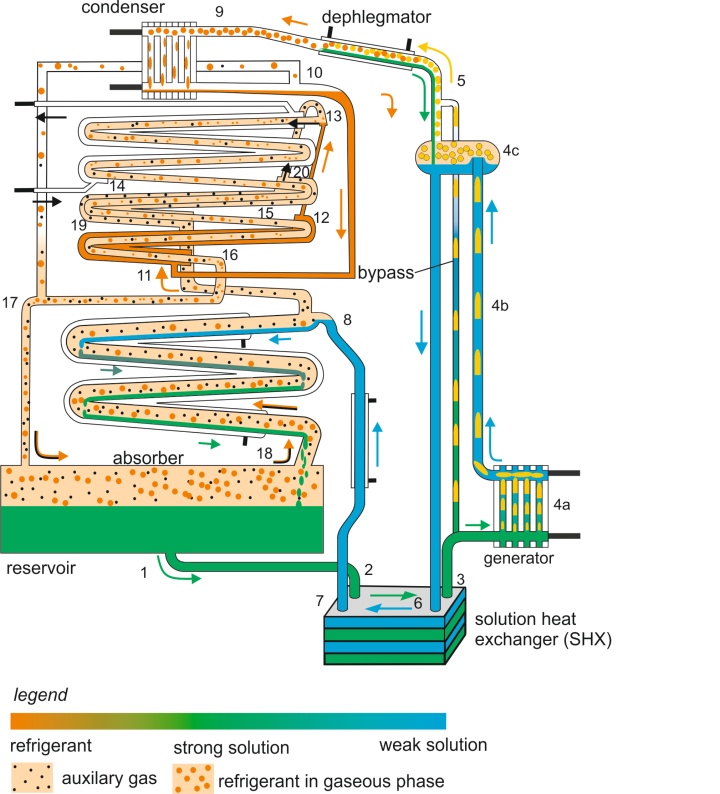Brief description
A diffusion-absorption refrigerator is operated exclusively by the addition of heat and does not need any mechanical energy. The refrigerating machine therefore operates free from wear and at a low noise level. Due to these features, diffusion-absorption refrigerators are widely used as minibars in hotels and for camping.
In the EDAPA research project, a PhD scholarship funded by the German Federal Environmental Foundation (Deutsche Bundesstiftung Umwelt - DBU), the diffusion-absorption process shall be made applicable for the air conditioning of buildings by scaling the process towards higher cooling capacities. The diffusion-absorption refrigerating machine can be driven by various heat sources. If waste heat, decarbonized district heating or solar thermal heat are used to drive the machine, there will be no greenhouse gas emissions. Ammonia as refrigerant does not have either global warming potential or ozone depletion potential. A diffusion-absorption refrigerating machine can be driven without electricity and can therefore be operated as stand-alone system in areas with a lack of infrastructure.
In the diffusion-absorption refrigerating machine, the integrated solvent pump is replaced by a bubble pump; the entire refrigeration cycle runs at the same absolute pressure level. In the bubble pump, the solution circuit is driven and the refrigerant is separated from the solution, both by partial evaporation.
Due to the same absolute system pressure, cooling capacity can only be generated by evaporation due to partial pressure differences. The partial pressure differences are caused by the circulation of auxiliary gas. The auxiliary gas is weighted by the evaporating refrigerant and descends to the absorber where the refrigerant is absorbed from the auxiliary gas. The gas becomes lighter again and ascends towards the evaporator where it can be weighted again.
In order to increase the cooling capacity of a diffusion-absorption refrigerating machine, an increased heat input in a more compact design and an increase in the auxiliary gas circulation are required. To increase the performance density of the heat input, a plate heat exchanger with a connected vertical lift tube is used for the first time. This generator unit is key in the research project.
Objectives
The objective of the research project is to achieve a cooling capacity of 1-2 kW and thus to enable the air conditioning of smaller living spaces.
Project duration
01/2020 – 12/2022
Acknowledgements
The project is funded by a PhD scholarship of the German Federal Environmental Foundation (Deutsche Bundesstiftung Umwelt - DBU).

Johannes Brunder, M.Sc.
Academic employee


